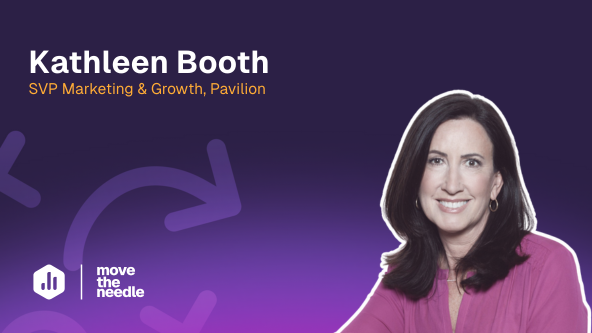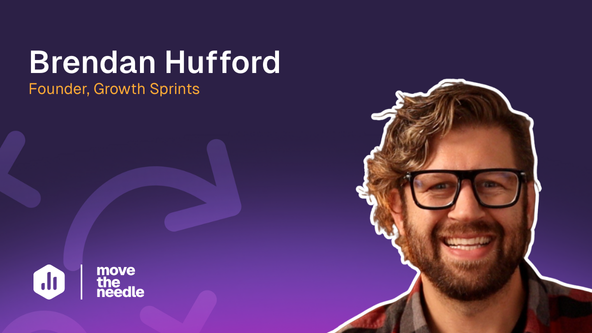Table of contents
Can you describe who your ideal customer is? Who are your best-fit customers: the ones who get the most value from what you do, and who bring you the most value in return?
Most companies hit a point where they define a clear ICP (Ideal Customer Profile). This serves as a clear description of the type of company or person who benefits most from your product or service, and who brings the most value back to your business.
Having a well-defined ICP provides value to every team in your company. Marketing uses it to refine ad targeting and create more relevant content, case studies, and messaging. Product teams better understand who they’re building for. Sales knows where to focus the majority of their efforts. When you know exactly who you’re targeting, you can craft better messaging, prioritize leads more effectively, and ultimately close deals faster. In short, having a well-defined ICP keeps teams aligned and helps you grow more efficiently.
But many companies don’t have a well-defined ICP (if they have one defined at all). Others craft it based on wishful thinking, guesswork, or qualitative insights. Ryan Milligan, VP of Marketing at QuotaPath, took a different approach: he used data science to define an ICP that drives better marketing, sales, and retention outcomes.
Here’s the playbook he shared for building a data-backed ICP that actually moves the needle.
Listen to the full interview on Spotify or Apple Podcasts.
Start by Defining Customer Success Metrics
First, define what a “successful” customer looks like for your business. Ryan used three core metrics to measure this:
- Win Rate: Are you good at attracting and closing deals with these customers?
- Net Promoter Score (NPS): Are these customers happy and telling you they’re happy?
- Gross Revenue Retention (GRR): Do these customers stick around?
His logic: your ICP should be customers you can win, keep happy, and retain. It’s as simple as that.
Run Logistic Regression Models to Identify Predictive Characteristics
The key here is that QuotaPath didn’t guess their ICP criteria. They analyzed 30-40 potential characteristics of their customer base (industry, employee count, CRM used, etc.) and ran three separate logistic regression models — one for each success metric (win rate, NPS, and GRR).
I’m not going to pretend like I knew what a logistic regression model was before this interview (or now, for that matter 😉 ). I’m also not going to pretend that ChatGPT doesn’t exist. So here’s what it says:
“A logistic regression model is a type of statistical model used to predict the probability of a binary outcome — meaning an outcome that has only two possible values, like yes or no, win or lose, or clicked or didn’t click.
Instead of predicting a number (like linear regression), logistic regression predicts the likelihood that something belongs to a particular category. It works by taking input variables, applying a weighted formula, and then passing the result through a function (called the logistic or sigmoid function) that squashes the output into a range between 0 and 1 — which you can interpret as a probability.
For example, you might use logistic regression to predict the probability that a customer will churn based on their usage patterns. If the model says 0.8, that means there’s an 80% chance they’ll churn.”
The point is, Ryan identified the top 30-40 characteristics he wanted to test, to see if any stood out as being especially helpful in identifying best-fit customers. Ryan admitted it’s a laborious process, but one that’s become much easier with the advent of AI.
Narrow Down to Three Clear, Observable ICP Characteristics
After combining the regression outputs and doing a gut check with their team, QuotaPath’s ICP boiled down to three key criteria:
- Company Size (Employee Count): Upper SMB to mid-market companies with 20–2,000 employees performed best.
- Industry Fit: Some industries (those with extremely complex comp plans) were negative indicators.
- CRM: Companies using HubSpot or Salesforce showed better outcomes due to structured, accessible deal data.
In other words, they defined their ICP as mid-market companies + using HubSpot/Salesforce + in industries where comp plans are relatively straightforward.
Finally, they implemented an internal “ICP fit” scoring in CRM based on those criteria, and anything that checked all three boxes was considered a top ICP opportunity.
The Impact on Pipeline and Revenue
After implementing this data-backed ICP framework, QuotaPath saw:
- ICP pipeline composition increase from 22% to 35–40%
- A 40% year-over-year improvement in win rate
- Early signs of improvement in retention metrics
Marketing began targeting ICP profiles exclusively with ABM efforts. Sales reps focused messaging and time only on accounts that matched these characteristics. And customer case studies were chosen to reflect ICP customers.
Advice for Defining Your ICP
Here’s some advice Ryan shared for companies going through a similar exercise:
- Start with Win Rate: If you’re early-stage and don’t have renewal data yet, start with win rate as your first metric.
- Add Gross Revenue Retention (GRR) or Net Promoter Score (NPS) as you grow: As your customer base matures, add those metrics to deepen the analysis.
- Only pick metrics that are trackable at the point of demo booking: If you can’t measure it early, it won’t help your pipeline strategy.
- Balance data with logic: Run the analysis, but confirm it aligns with what your sales team experiences.
He also noted the importance of internal communication around this. It’s critical to explain what you’re doing, what data you’re using, and why, so teams don’t push for untrackable or qualitative characteristics.
Another pitfall to watch out for is conflating aspirational ICPs with your current ICP. Often, these two aren’t the same. While you’re free to pick a more “aspirational ICP” that you hope to better attract and serve in the future, Ryan recommends starting with the customers that bring you the most value today.












